Mastering the Chat Menu: Your Guide to Lead Contact Insights & Management
Mastering the Chat Menu: Your Guide to Lead Contact Insights & Management
Welcome to this comprehensive tutorial on leveraging the 'Chat Menu' to gain deep insights into your leads and perform essential management tasks. This section is designed to give you a complete overview of all contact information for a lead, along with the tools to perform additional critical actions, ensuring efficient communication and follow-up.
From understanding a lead's basic details to managing complex interactions, this guide will walk you through every feature of the contact details panel.
Getting Started: Accessing Lead Information
Step 1: Accessing Lead Contact Details
Navigate to the chat menu. When you click on any lead, their comprehensive information will appear in the contact details panel on the right side of your screen.
Step 2: Understanding the Lead Header
At the very top of the contact details panel, you'll find the lead's name, their mobile number, and an icon indicating the assigned team member's name.
Step 3: Gaining Context with Lead Location and Time
Just below the lead's name, the system conveniently displays their origin country and their current local time. This crucial information helps you tailor your responses and engage with the lead at appropriate times.
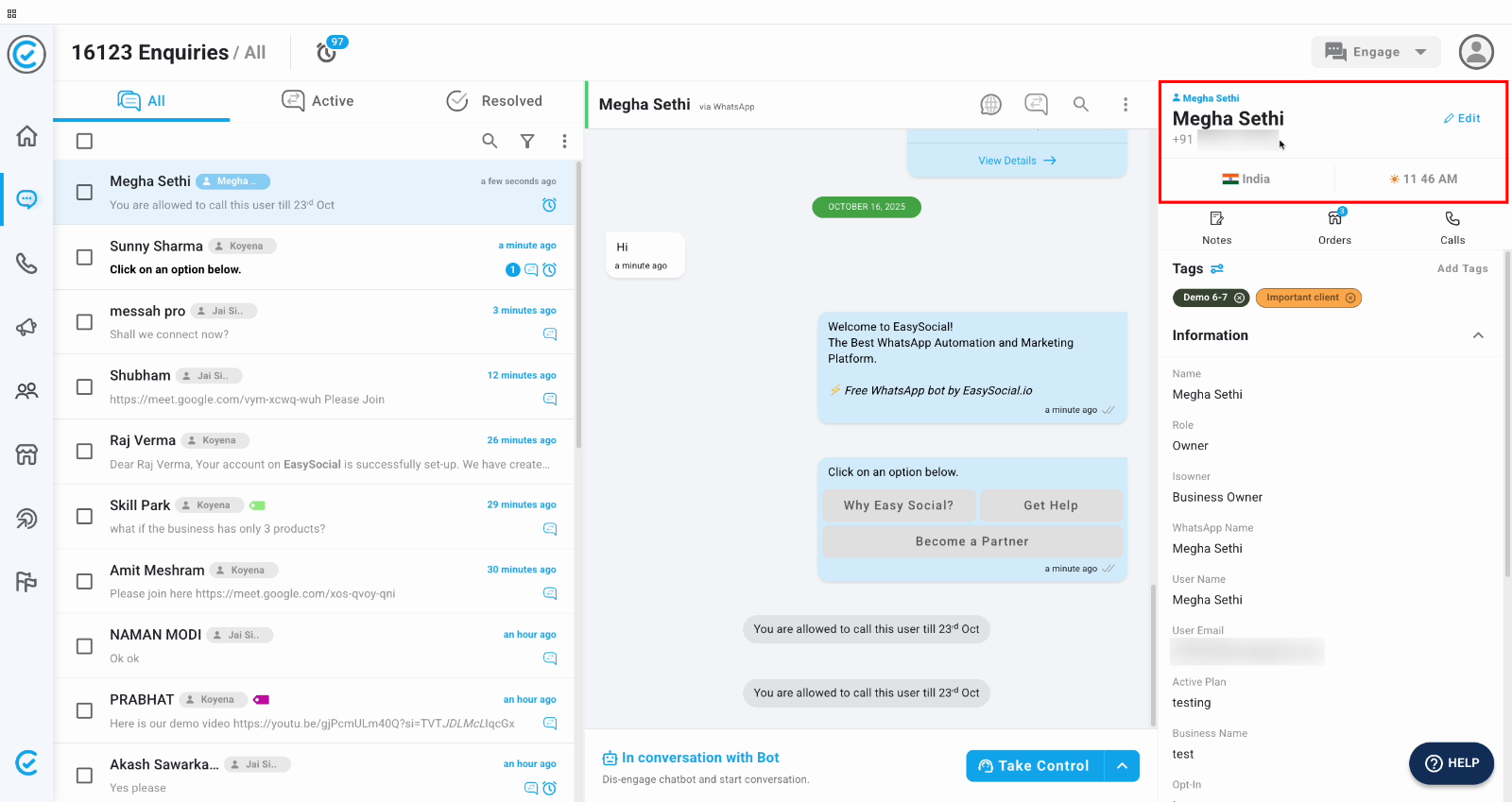
Managing Lead Notes & Follow-ups
Step 4: Accessing Lead Notes
Locate and click the notes icon. This action will open a side drawer, presenting a chronological list of all notes previously created for this specific lead. It's important to remember that once a note is created, it cannot be deleted unless the entire contact is deleted.
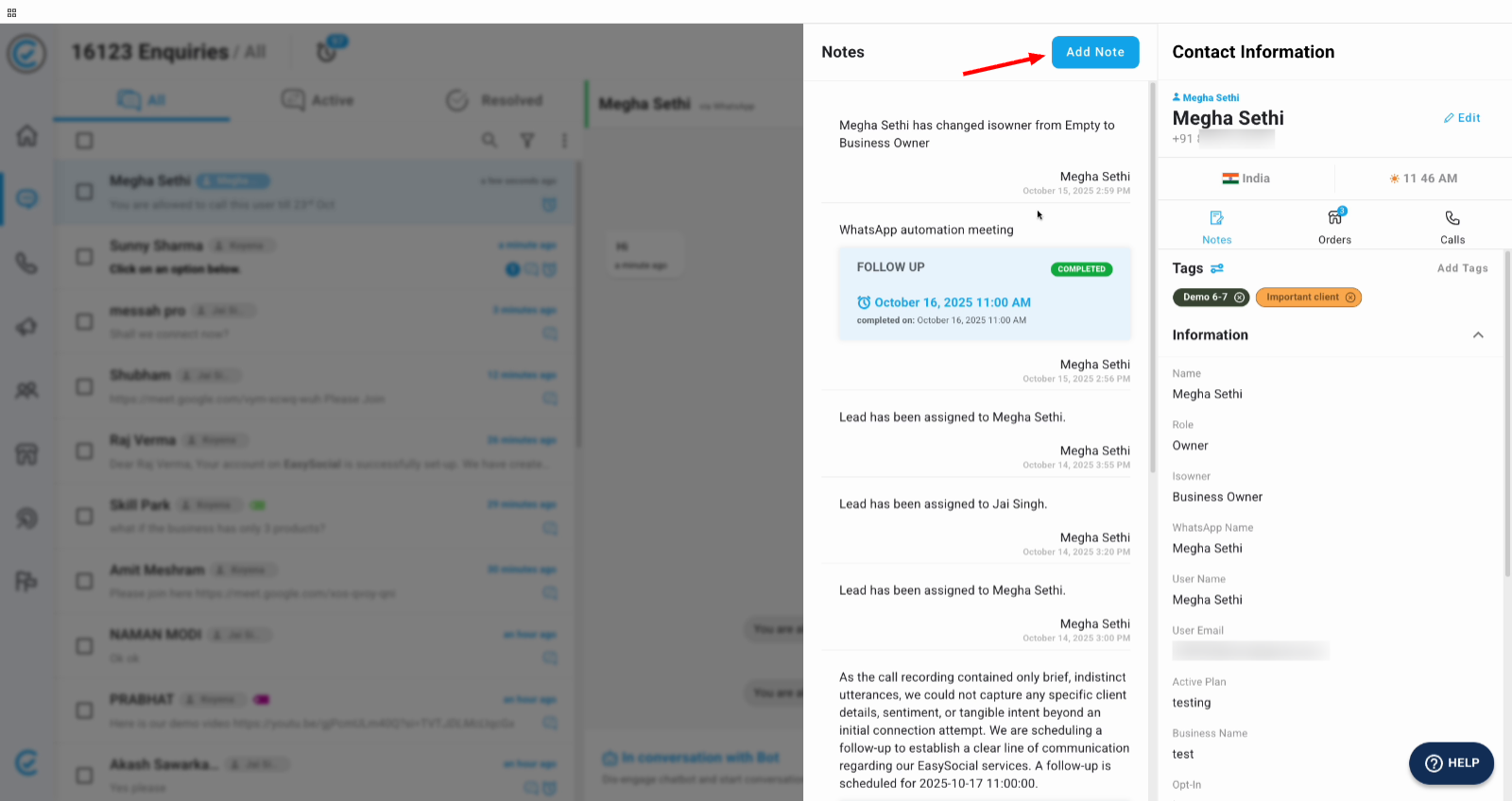
Step 5: Adding a New Note
To contribute a new note to the lead's history, simply click on the "add note" button within the notes drawer.
Step 6: Choosing a Note Type
You have two options for creating a note: you can either select a predefined message from the list of Ready-to-use note messages or opt to create a new note from scratch.
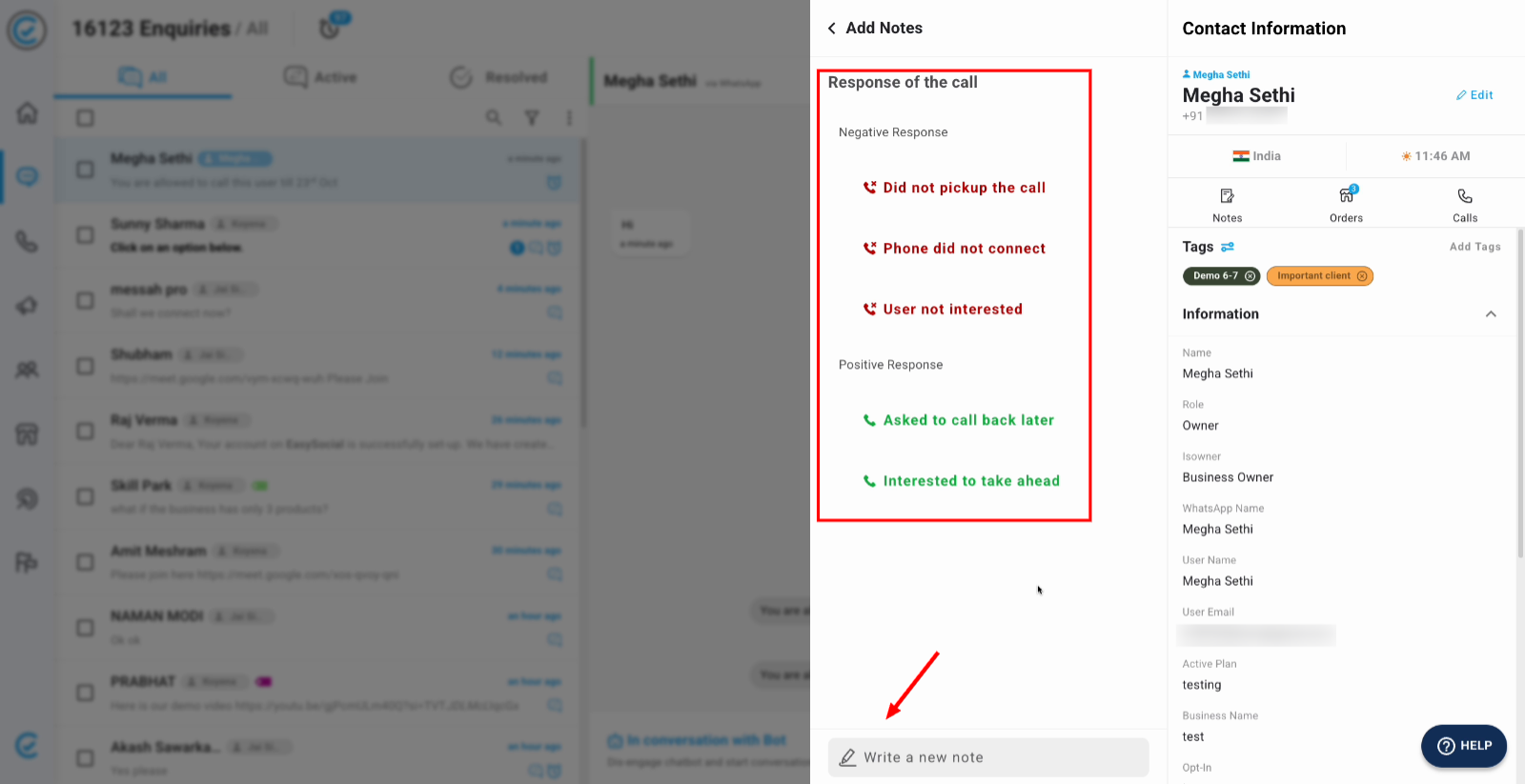
Step 7: Writing a Custom Note
If you chose to create a new note, click on the “write a new note” option to open the text input area.
Step 8: Assigning a Lead Status
For better organization and indication of the lead's current stage, you can select from various statuses available within the note creation interface.
Step 9: Scheduling a Follow-up
To ensure you don't miss important actions, you can add a follow-up to your note. Simply switch on the "follow-up" toggle and then select the desired date and time for the reminder.
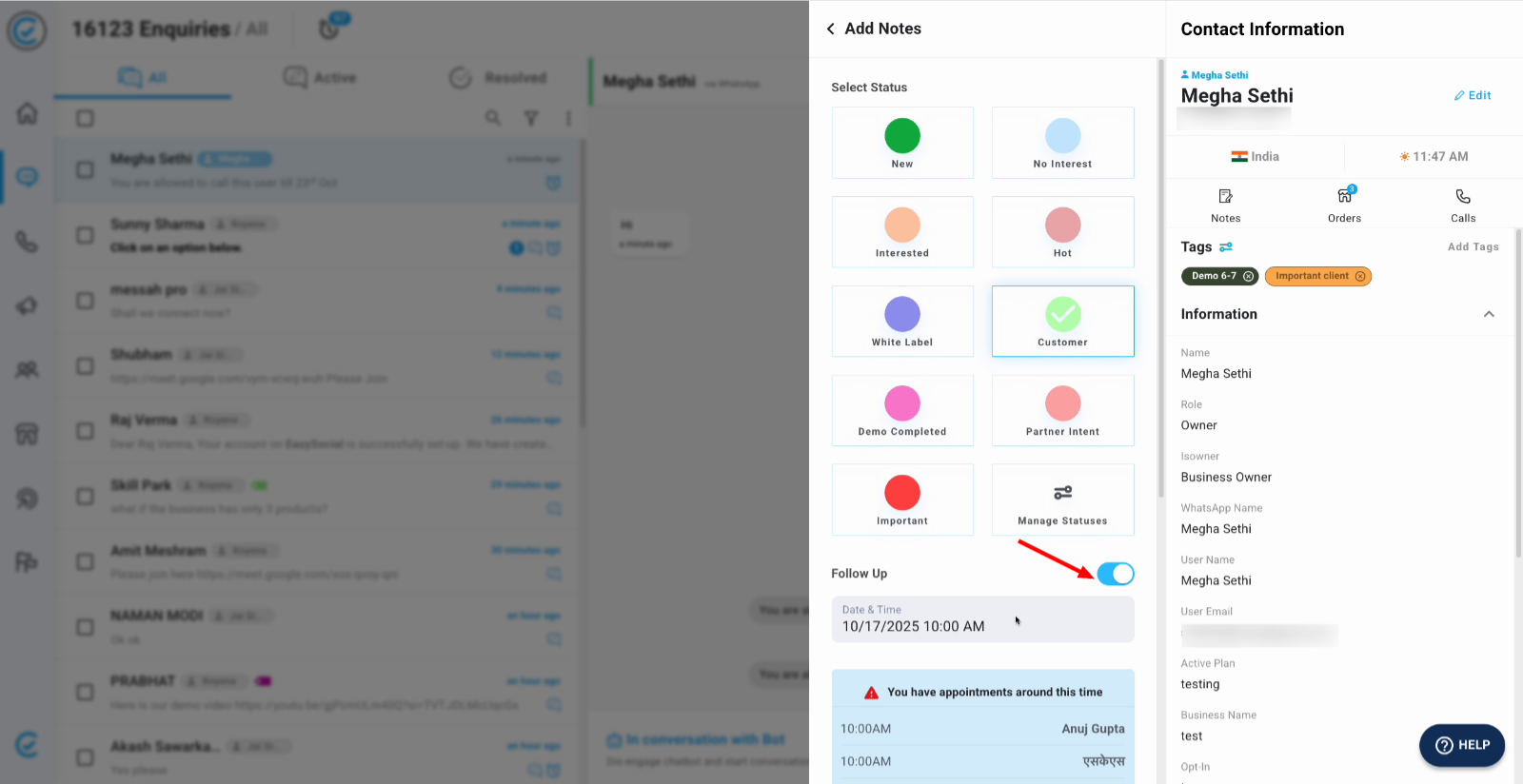
Step 10: Saving the Note and Follow-up
Once your note content is complete and any follow-up details are set, click the 'Save Note' button to finalize its creation. This will save the note along with the scheduled follow-up.
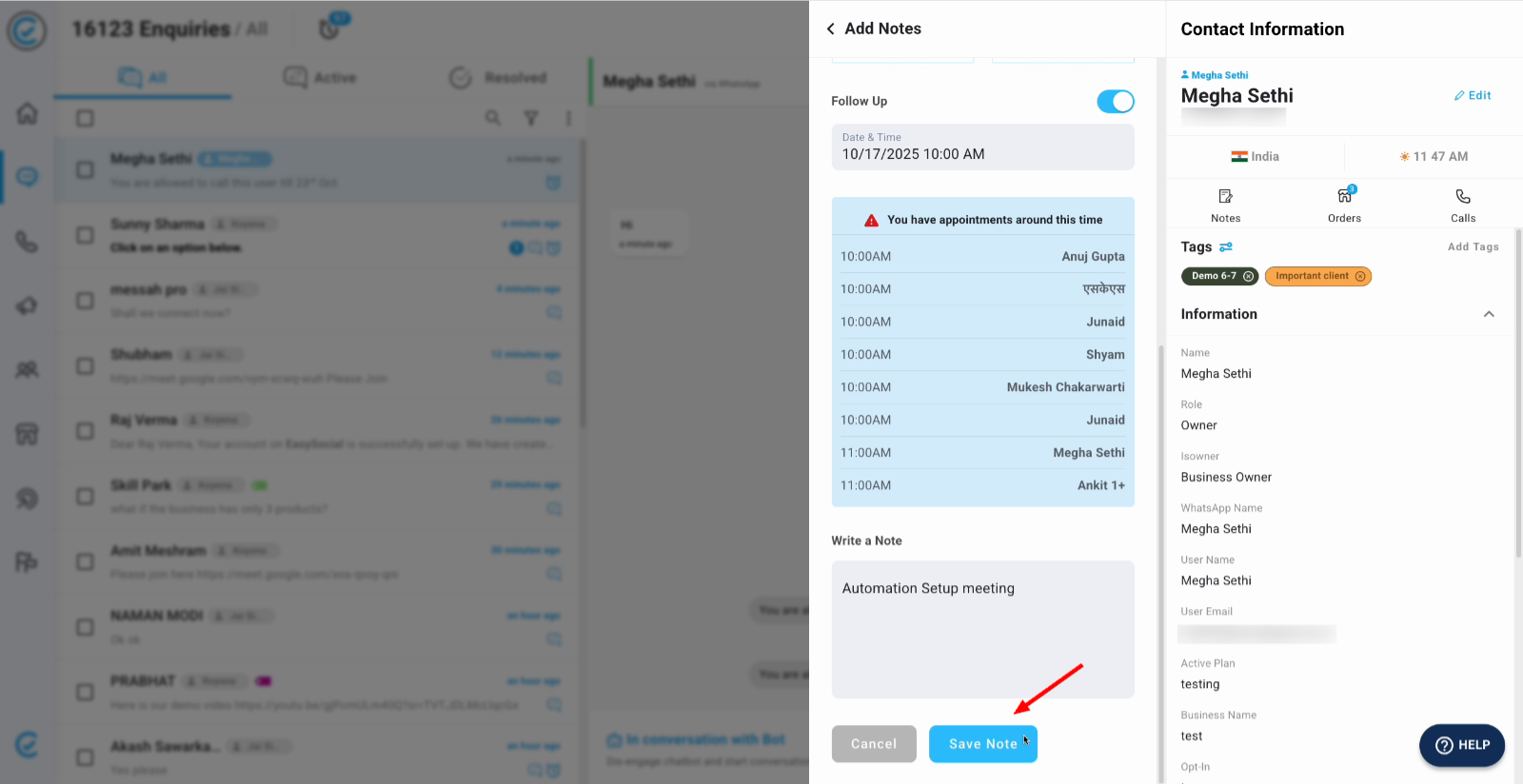
Step 11: Viewing Saved Notes
After saving, your newly created note will be visible in the notes drawer, and also at the bottom right of the contact details panel, under the "Notes" section.
Step 12: Marking a Follow-up as Complete
When a follow-up task has been addressed, you can mark it as complete by clicking "mark as completed". A green "completed" indication will then appear next to the follow-up, providing a clear visual cue.
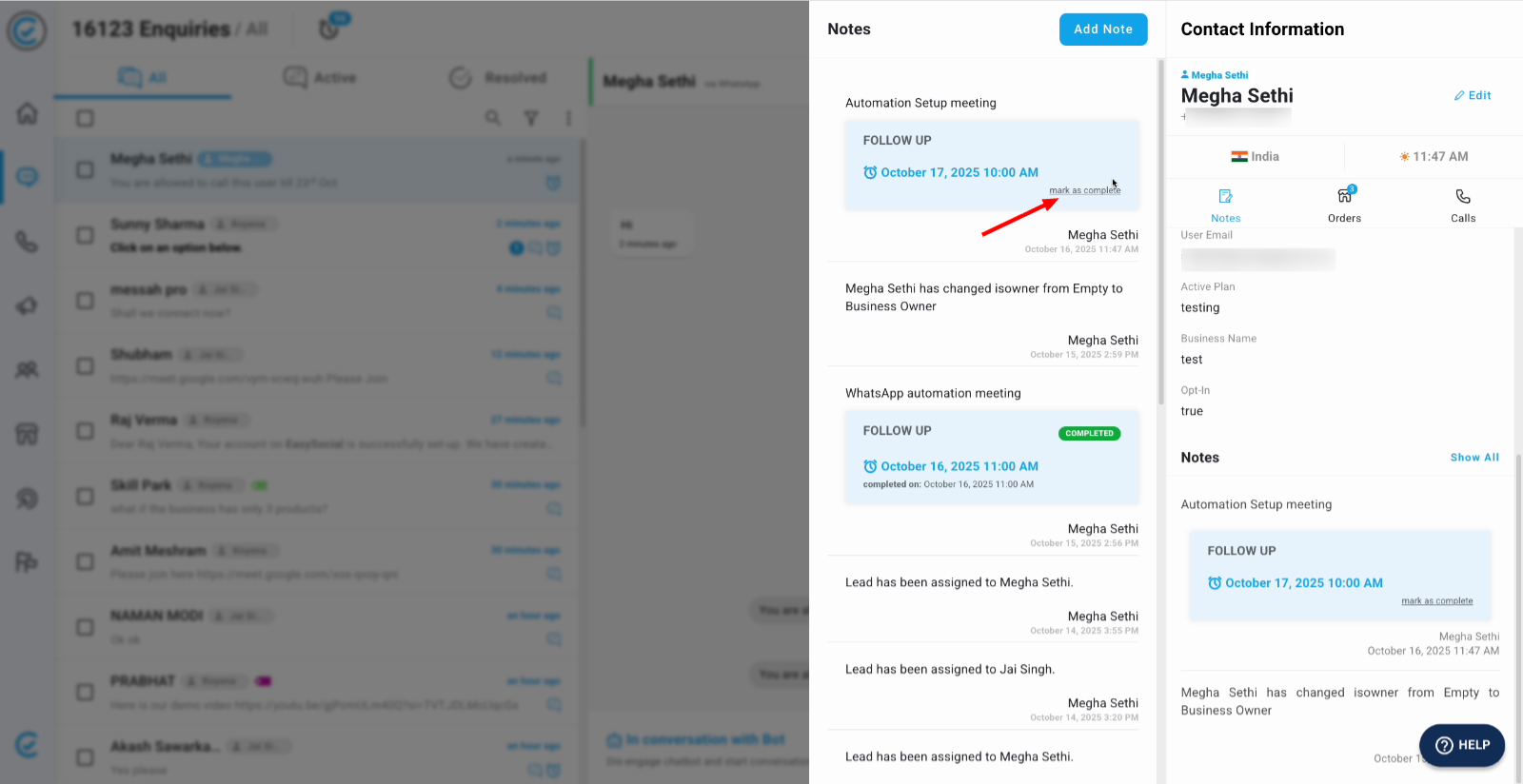
Managing Orders
Step 13: Creating New Orders (if Catalogue Connected)
Navigate to the "orders" tab. If your account has a catalogue connected, you have the ability to manually create a new order for the lead. Click on 'Create new Order' and fill in the necessary details. For a deeper dive into this functionality, please refer to our dedicated video on WhatsApp Catalogue.
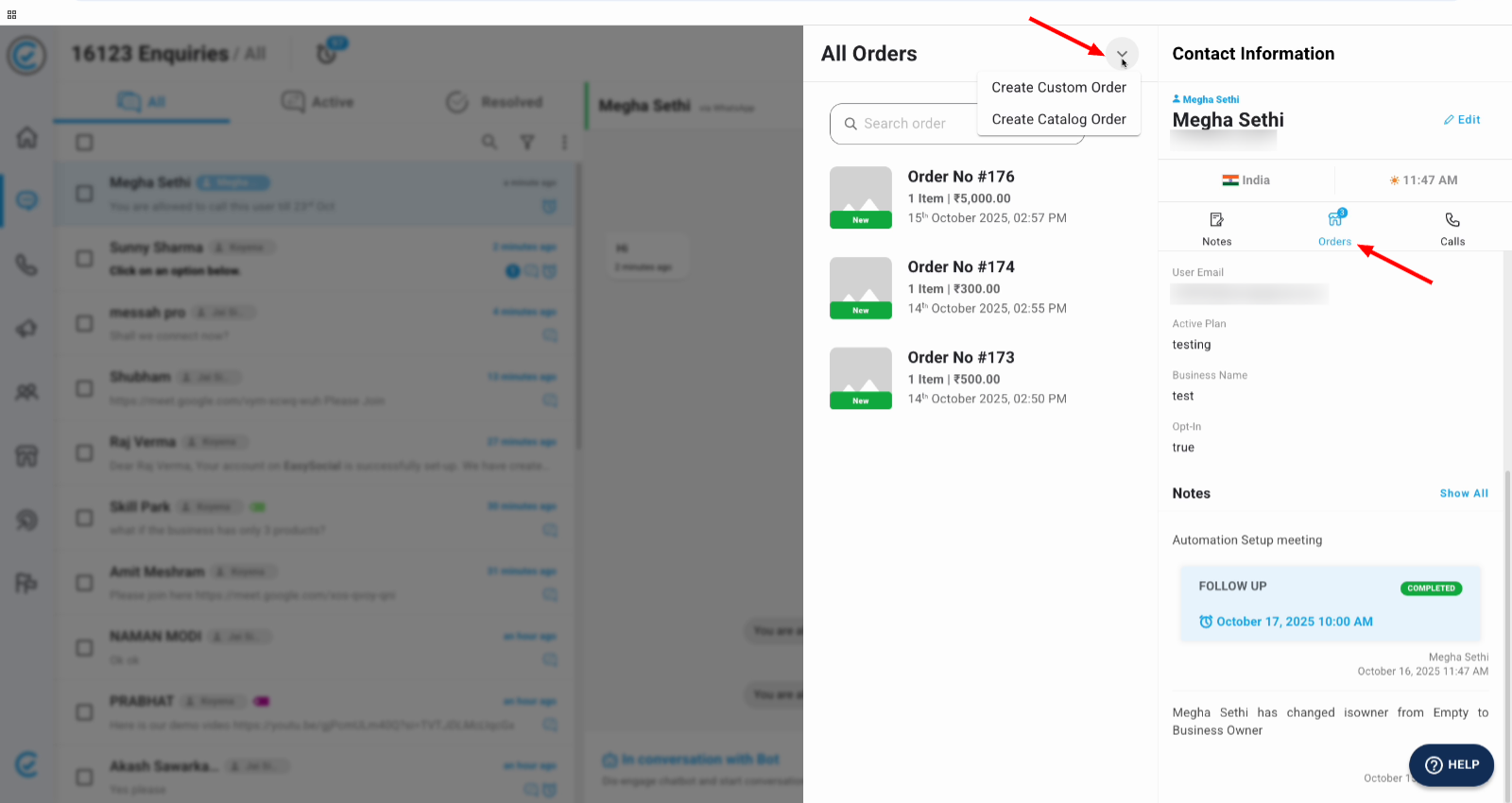
Making Calls to Leads
Step 14: Initiating a Call
To call the lead, locate and click the "call" icon within the contact details panel.
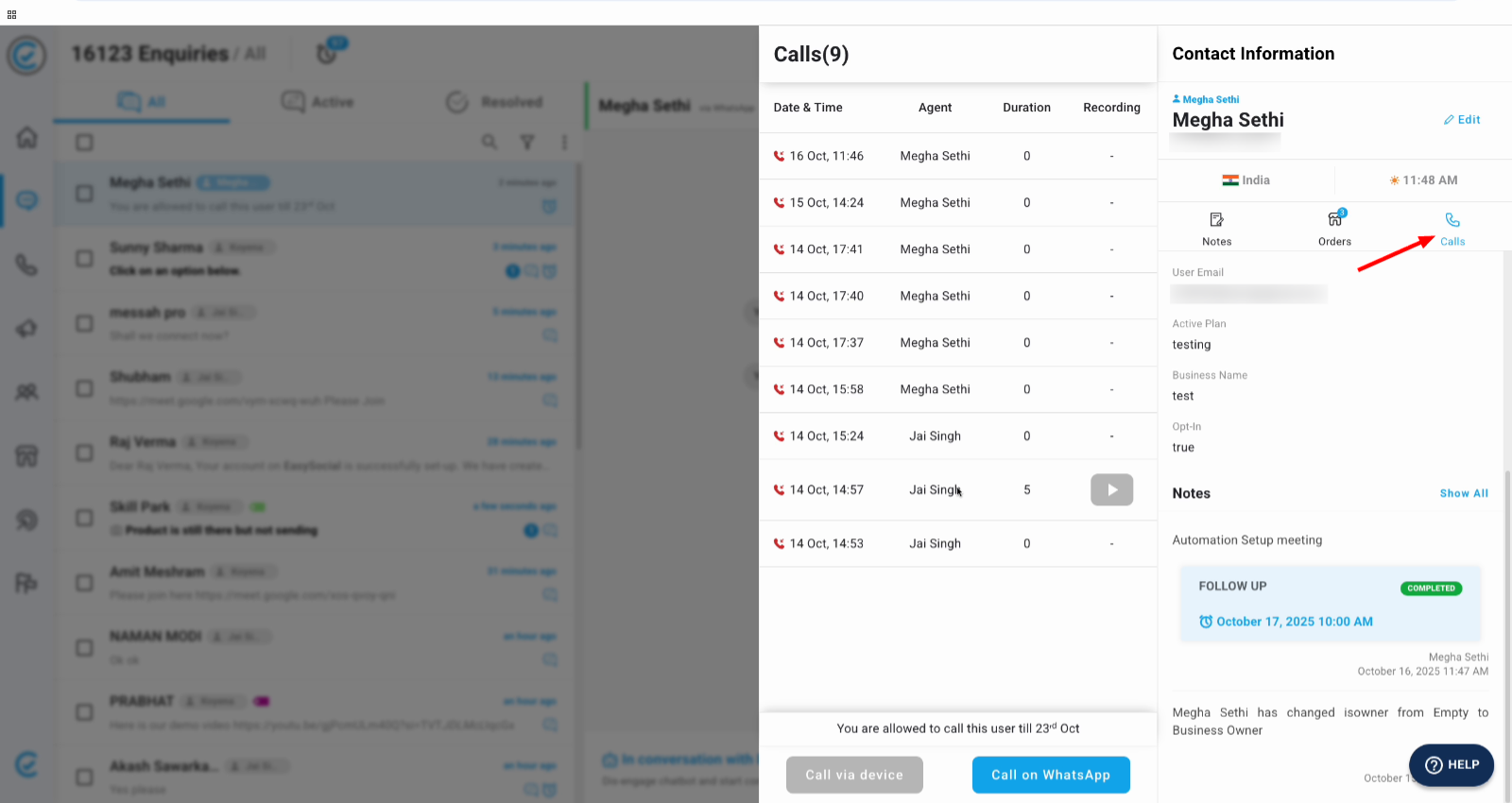
Step 15: Viewing Call History and Recordings
Clicking the call icon will open a drawer displaying a comprehensive history of all calls made to the lead, including who initiated each call. For calls made on WhatsApp, you can also access the call recordings directly from this panel.
Step 16: Understanding Call Permissions
The system will indicate if the lead has granted your business permission to make calls and for how long that permission is valid. It is crucial to remember that your business can only call a user if they have explicitly granted permission.
Step 17: Choosing Your Call Method
When making a call, you'll be presented with two options: call via device or call via WhatsApp. The user has the prerogative to disallow calls based on their preference for either method.
Step 18: Permission Indicators in Chat
Beyond the call drawer, you can also see indications of the user's call permissions directly within the chat section, providing a quick reference.
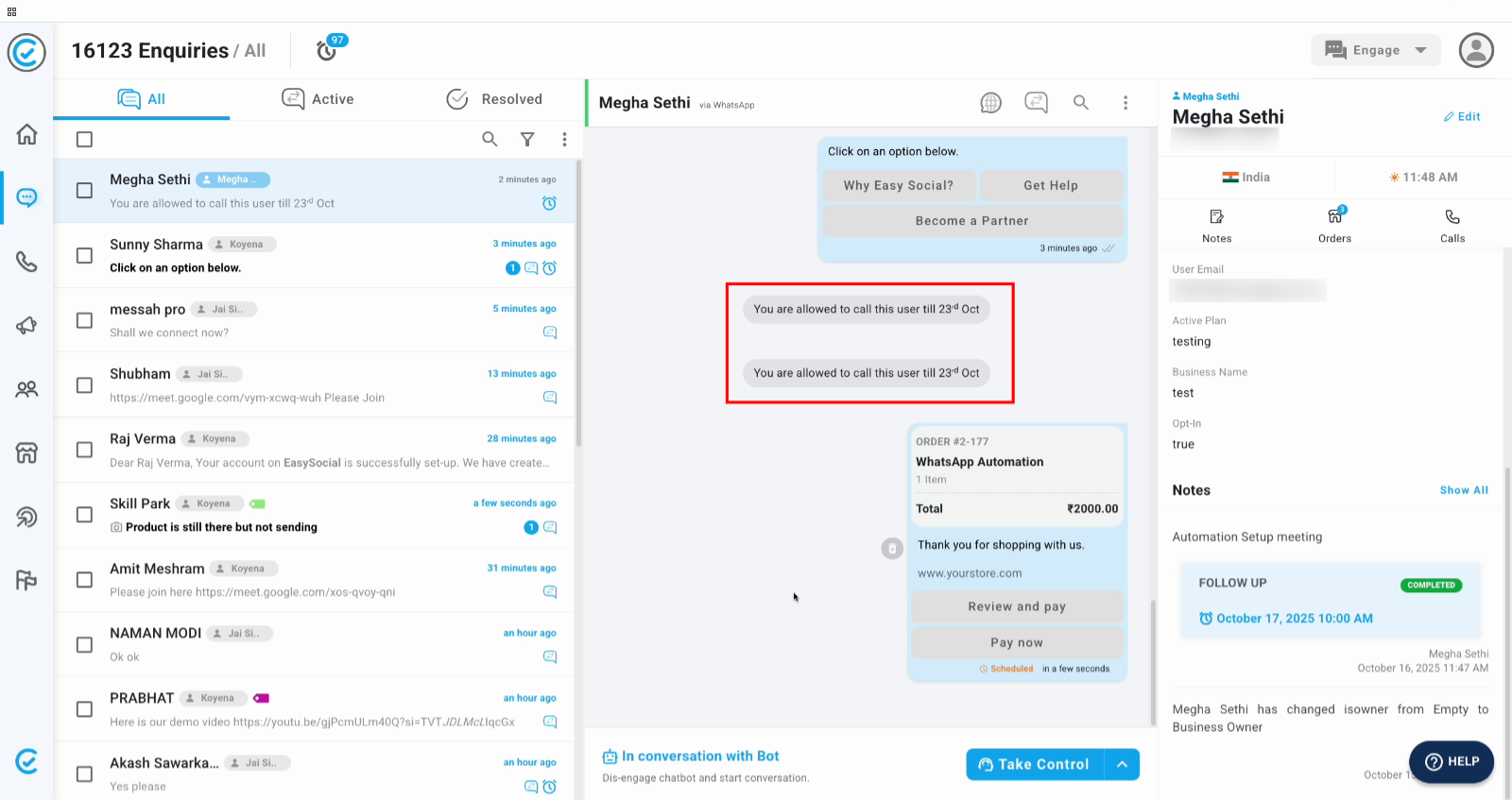
Organizing Leads with Tags
Step 19: Adding Existing Tags
To effectively categorize and filter your leads, you can utilize tags. Click on 'Add Tags,' select the relevant tags from your pre-existing list, and then click 'Apply.' For more in-depth information on tag management, please consult our dedicated video.
Step 20: Creating New Tags
To create a brand new tag, click the blue icon located next to the 'Tags' option. A field will appear where you can enter the desired tag name under the "new tag" option.
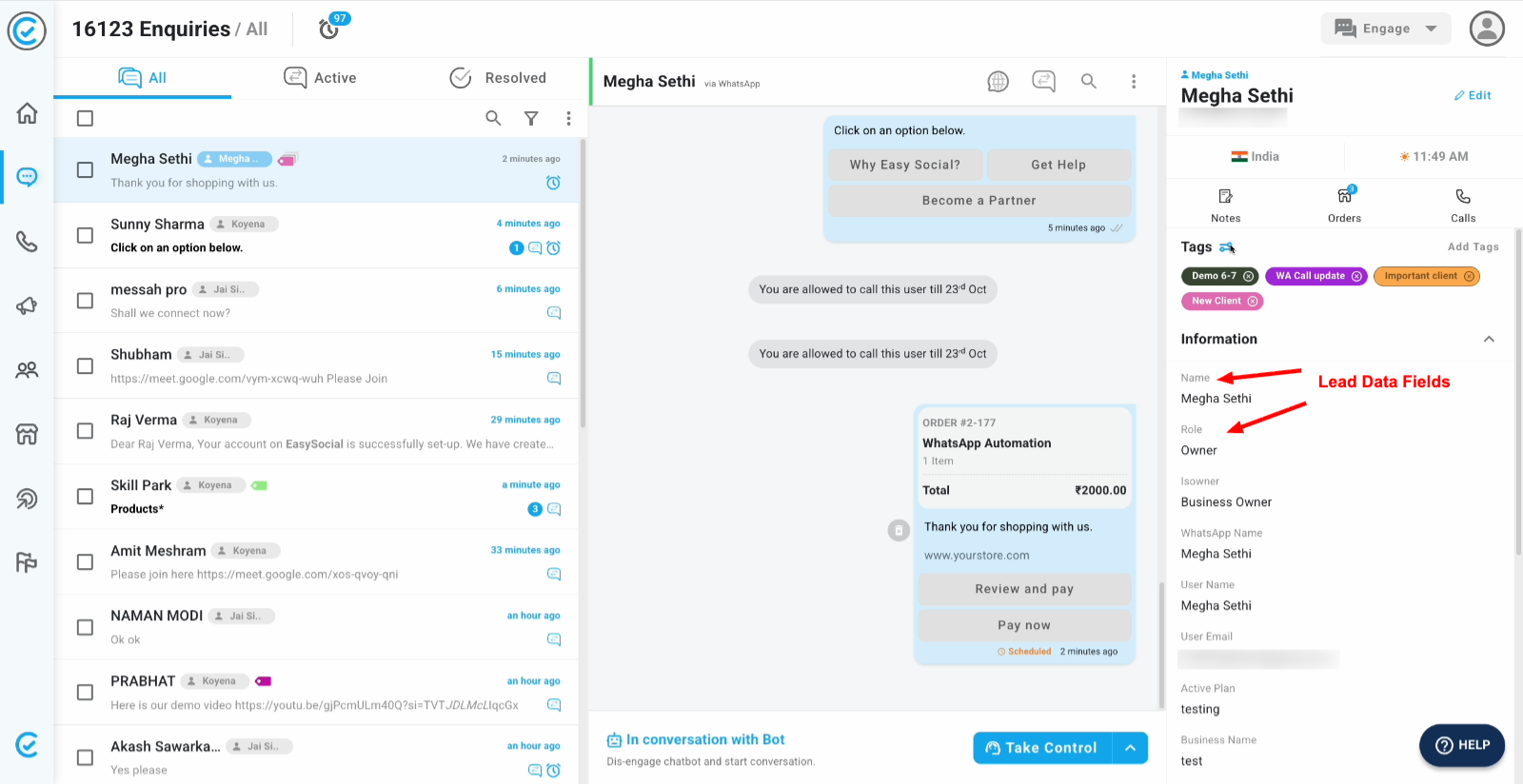
Step 21: Editing Existing Tags
Should you need to modify a previously created tag, navigate to the "manage tag" tab and make your desired edits.
Managing Lead Information & Data Fields
Step 22: Understanding Lead Data Fields
EasySocial utilizes "lead data fields" to store crucial information about your leads. These fields are highly efficient as they can be automatically updated via chatbot interactions, minimizing the need for manual data entry. For a comprehensive overview of lead data fields, please watch our detailed video.
Step 23: Manually Editing Contact Information
To manually update a lead's contact information, click the "Edit" option located to the right of the lead's name in the contact details panel.
Step 24: Updating Lead Details
An editable form will appear. Make the necessary changes to the lead's information and then click the "update" button to save your modifications.
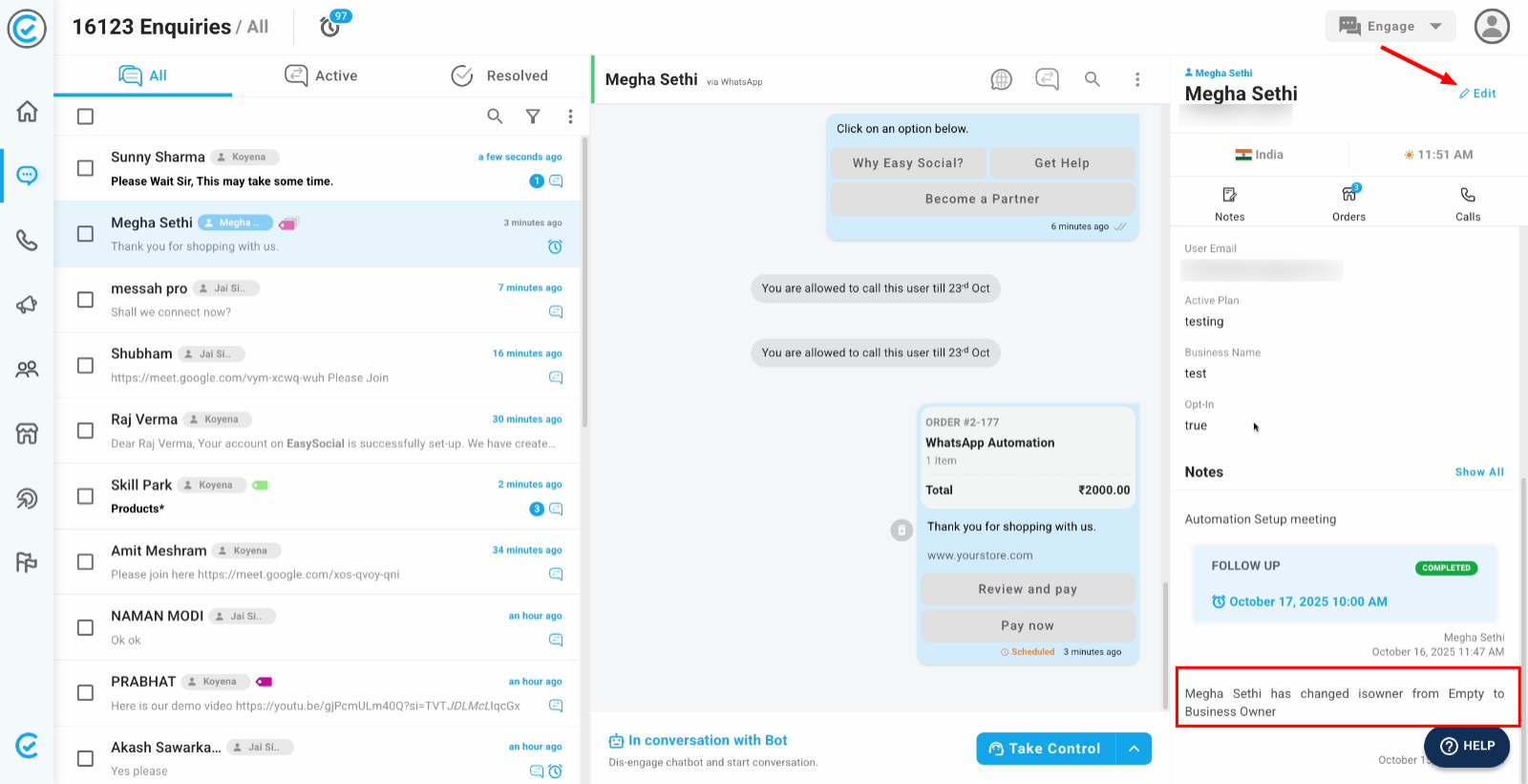
Step 25: Verifying Updated Information
After clicking "update," you will observe that the lead's contact information has been successfully revised and is now reflected in the panel.
Step 26: Tracking Edit History via Notes
It's important to note that any manual edits made to a lead's information by a team member are automatically logged as a note under the "notes" section, providing a clear audit trail.
Conclusion
You have now completed the comprehensive guide to utilizing the Chat Menu's contact details panel. By mastering these features – from managing notes and follow-ups, handling orders, initiating calls, applying tags, to updating lead information – you can significantly enhance your team's efficiency and effectiveness in lead management. These tools are designed to provide a holistic view and actionable insights, making your interactions more informed and productive.
This concludes our series on the Chat Menu. We encourage you to explore these functionalities and integrate them into your daily workflow to maximize your productivity.